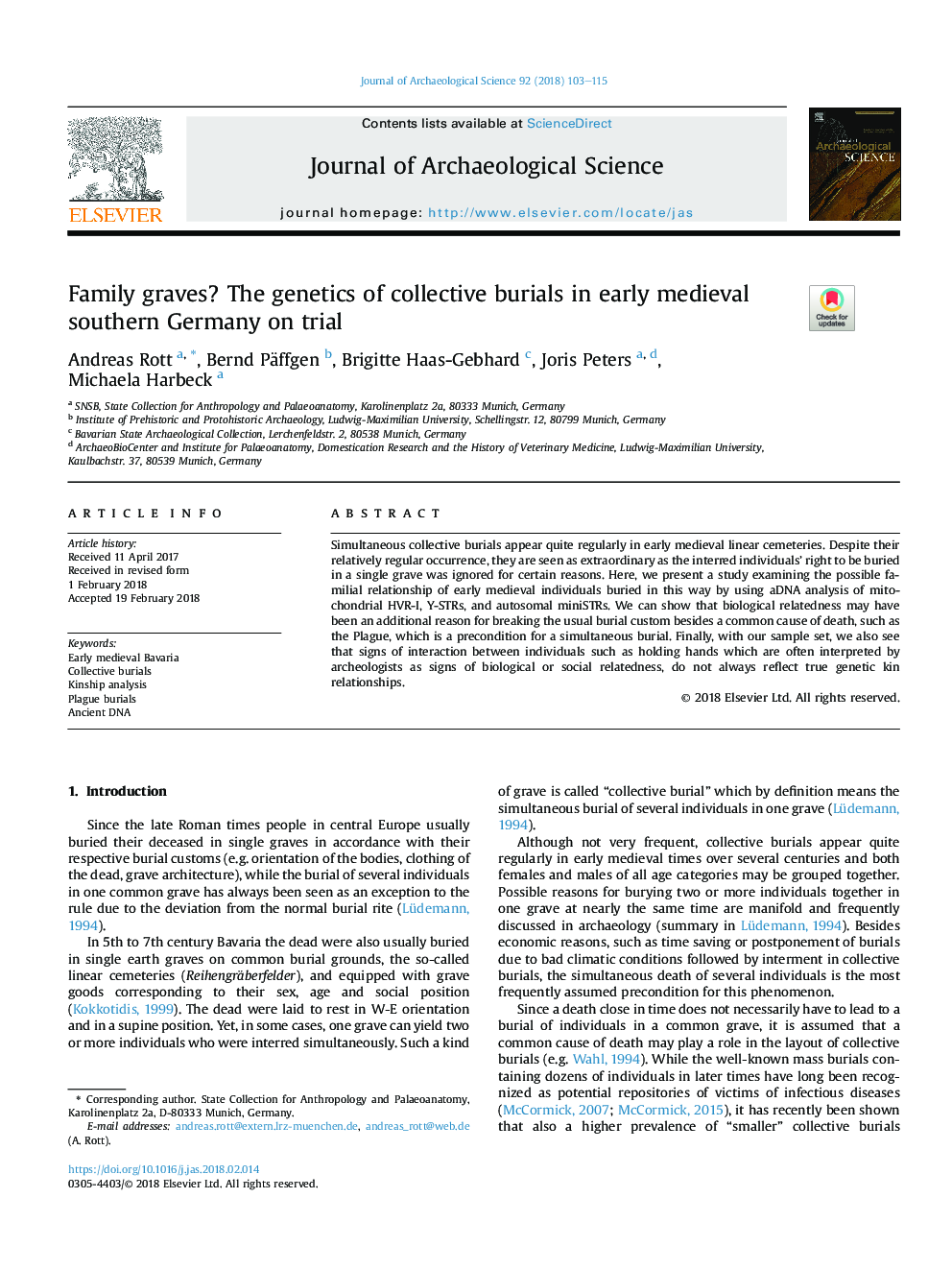| Article ID | Journal | Published Year | Pages | File Type |
|---|---|---|---|---|
| 7440990 | Journal of Archaeological Science | 2018 | 13 Pages |
Abstract
Simultaneous collective burials appear quite regularly in early medieval linear cemeteries. Despite their relatively regular occurrence, they are seen as extraordinary as the interred individuals' right to be buried in a single grave was ignored for certain reasons. Here, we present a study examining the possible familial relationship of early medieval individuals buried in this way by using aDNA analysis of mitochondrial HVR-I, Y-STRs, and autosomal miniSTRs. We can show that biological relatedness may have been an additional reason for breaking the usual burial custom besides a common cause of death, such as the Plague, which is a precondition for a simultaneous burial. Finally, with our sample set, we also see that signs of interaction between individuals such as holding hands which are often interpreted by archeologists as signs of biological or social relatedness, do not always reflect true genetic kin relationships.
Keywords
Related Topics
Physical Sciences and Engineering
Materials Science
Materials Science (General)
Authors
Andreas Rott, Bernd Päffgen, Brigitte Haas-Gebhard, Joris Peters, Michaela Harbeck,
